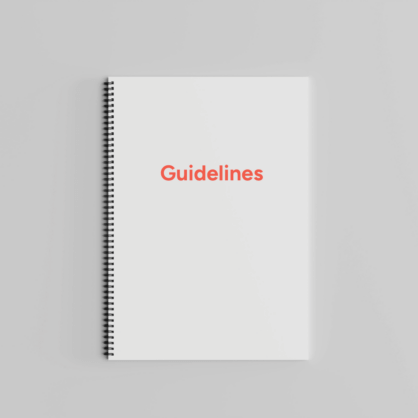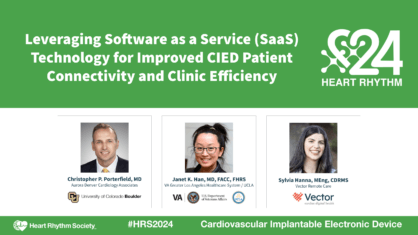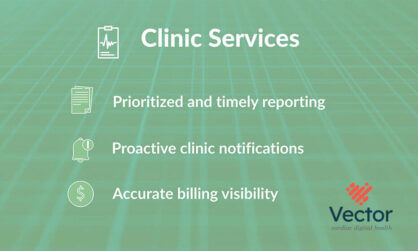History & Future of Cardiac Remote Patient Monitoring

Healthcare reforms fueled by government legislation and recent technological innovations have propelled cardiac remote patient monitoring to the forefront in the early 2020s, but the history of cardiac remote patient monitoring dates to more than half a century ago.
Between the COVID-19 pandemic and increasing amount of chronic diseases found in patients, the need for virtual healthcare has taken flight at an accelerated pace. This has made access to high-quality remote healthcare services critical for both clinics and their patients. But what’s the history of cardiac remote patient monitoring, and where and why exactly did it start?
The Beginning: The Need for Cardiac Remote Patient Monitoring
The first implantable pacemaker, was developed in the late 1950s, but the first clinically successful pacemaker was implanted into a 77-year-old at a Veterans Affairs hospital in New York in 1960.
As technology evolved and pacemakers grew in popularity, transtelephonic monitoring became available in the early 1970s throughout the United States. Soon after, supplementing in-office visits with transtelephonic methods became commonplace. In the years to follow, additional remote monitoring methods such as wand-based radiofrequency platforms and inductive systems transferred via analog phone and eventually wireless cellular data became available to patients and caregivers.
The result of these new processes was a cardiac remote monitoring program in clinics which allowed physician assistants to send patient data via monitoring tools to clinics long distances from the site where data was initially gathered.
Much like how the history of cardiac remote monitoring began, the aim was to provide better healthcare services to improve patient outcomes.
Remoting Monitoring as the Standard of Care for CIED Patients
At the turn of 21st century, the first fully automatic remote monitoring platform for cardiovascular implantable electronic device (CIEDs) was introduced. These remote monitoring capabilities quickly advanced and gave physicians access to patient data for more immediate and accurate diagnosis and treatment of arrhythmias. This set the stage for the current remote monitoring landscape where pacemaker, ICD, and implantable loop recorder patients transmit their data to their physician via a device manufacturer’s transceiver on a regular basis.
With the increasing adoption remote cardiac monitoring, the Heart Rhythm Society released a consensus statement in 2015. This statement marked remote monitoring as the standard of care for CIED and created standards around how clinics should implement it in their programs.
In the years since, remote cardiac device monitoring has become commonplace giving physicians greater visibility into the status of patient health allowing for improved clinical outcomes for arrhythmia diagnosis and treatment. However, it has also resulted in an influx of data that many clinics are not equipped to manage. This has paved the way for clinics to reconsider their staffing models and engagement of external partners for support.
A Glimpse Into the Future of Cardiac Remote Patient Monitoring
According to the Centers for Disease Control and Prevention (CDC), nearly 52% of adults living in the United States today have one or more chronic conditions. While this is an alarming figure, what can be addressed is how clinicians are able to treat patients with those conditions and how the healthcare provided can be more effective for patients while increasing efficiency for clinics.
We’ve technologically reached the point where we can easily monitor a range of helpful data points, including blood pressure and glucose, weight, lung capacity and more. Using remote monitoring tools allow patients to transmit those data in real time for physicians to have greater visibility across chronic conditions for holistics healthcare. Cardiac remote patient monitoring is already proven to reduce hospital admissions and time to treatment for patients with heart disease, and there is a growing expectation among patients that they will have access to simple, reliable cardiac remoting monitoring solutions that increase convenience and quality of care.
As technology continues advancing and becomes increasingly affordable, infection can be decreased as patients skip in-person visits to clinics and reap the benefits of telehealth services which include cardiac remote patient monitoring. Clinics, meanwhile, get more data to improve patient outcomes.
Available as software with service or a software-only solution, clinics and their patients are invited to try The Vector Patient Care Platform™. With secure, HIPAA-compliant data exchanges, and a host of features and tools, our solution makes patient connectivity and management of rhythm, and heart failure patient data easy to track and optimize patient care. Let’s discuss how the future of cardiac remote patient monitoring can help improve your clinic.














